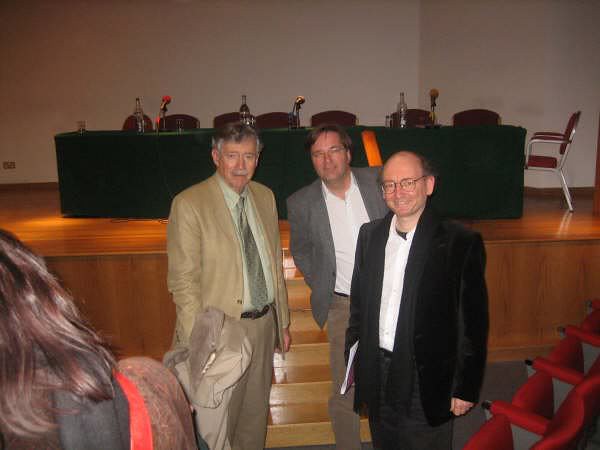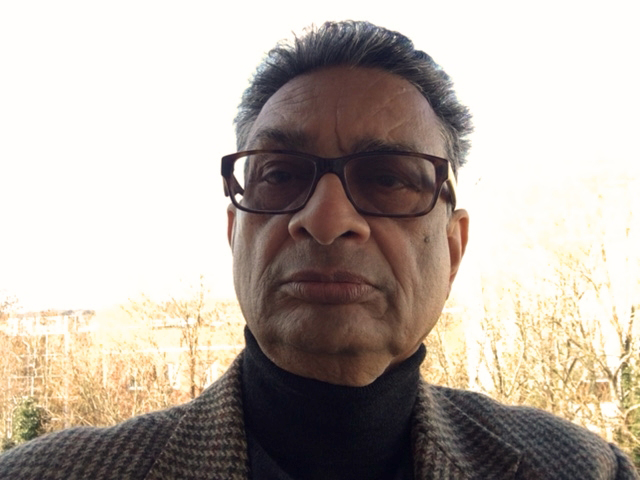 L to R: Prof Lawrence Babb(Amherst College), Prof Olle Qvarnstrom(University of Lund), Dr Peter Flügel(SOAS)
L to R: Prof Lawrence Babb(Amherst College), Prof Olle Qvarnstrom(University of Lund), Dr Peter Flügel(SOAS)Professor Lawrence A. Babb from Amherst College, USA delivered the 7th Annual Jain Lecture, sponsored by the European Network of Jain Studies at the Brunei Gallery Lecture Theatre on Wednesday, 21st March 2007.
The theme of the lecture was “ Jainism and the Culture of Trade”. However, in his opening address Professor Babb pointed out that the title is misleading and he therefore subtitled his talk, “Jains and Gems”. His talk was concentrated on a mineral and how it became intertwined with the lives of Jain community in Jaipur, India.
The mineral in question was a precious form of beryl known as emerald. The formative years of the enterprise were after the First World War when Jain merchants started importing emerald stones. The artisans who worked in the lapidary industry were mostly Muslims. Professor Lawrence stated that the industry was therefore globalised at birth since the first emerald deposits in India were not discovered before 1943! The businesses comprised of small and large family set-ups and most of them lived near their business premises. The business hours were from about 11am to 4pm and many of them had ties of past and present marriages. Thus Jain religion was a common point of reference and temples acted as a bridge between sub sects, e.g. Oshwals and Srimalis.
Professor Babb described in great depth the intricate system of price mechanism, batch sorting, packaging, etc of the gems. The essence of the system was that the price was fixed and was therefore monopolistic in nature. He said, “Oshwal Jains had basically constructed a fortress which was difficult to infiltrate”.
The merchants formed an association in 1930 with 37 members and it reached nearly 600 members in 1962, most of them being Oshwal Swetamber Jains. The Sixties and Seventies were a profitable period for these gem merchants. During this time, Hindus slowly started making inroads into this business and the year 1980 can be described as an important date for the demise of the old system. As a result, Muslims merchants also entered into this trade! Professor Babb clarified that the involvement of Jain merchants in the gem trade had nothing to do with Jainism and Jain ethics played no part in the business behaviour of the community. It merely provided a social framework in which a globalised business could flourish.
Professor Lawrence Babb concluded his very interesting lecture by stating that by the closing decade of the last century, the social landscape had changed and globalisation gave another twist to the industry. A gemstone mined in northern Tanzania called, ‘Tanzanite’ became an important spoke in the wheel of Jaipur’s gemstone industry!
 Dinesh Z. Shah
Dinesh Z. Shah